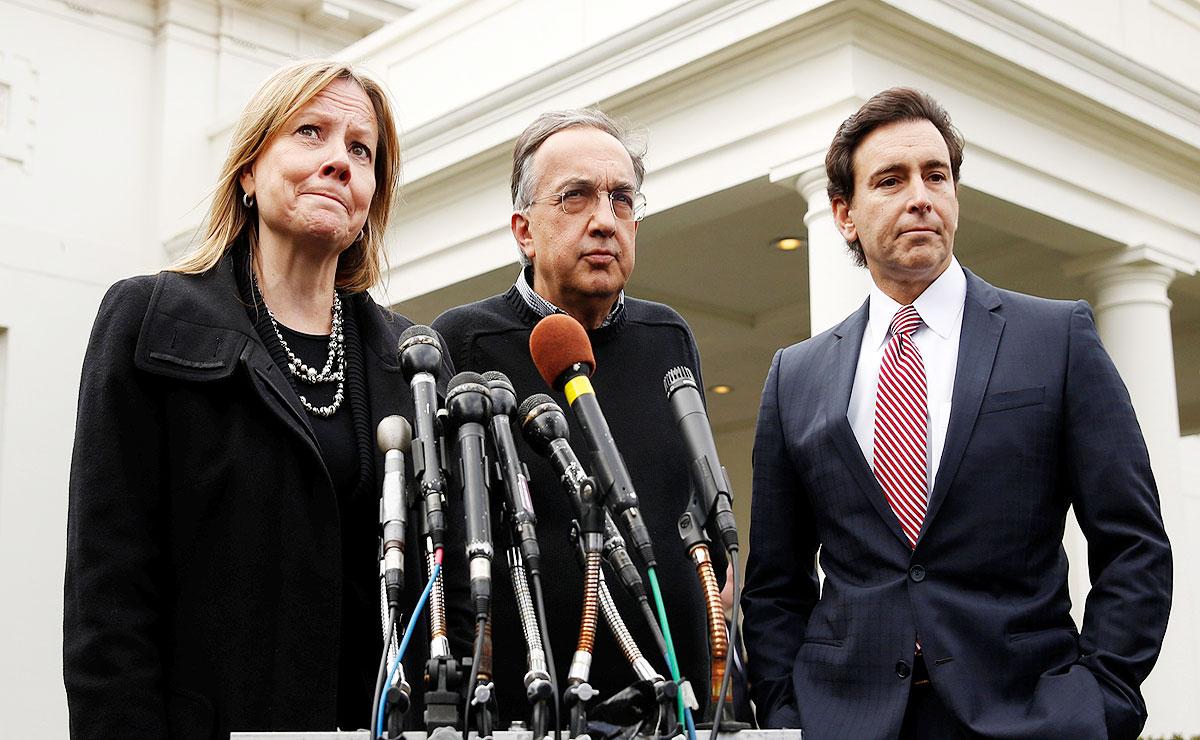A couple of weeks ago, we wrote about the auto industry’s uncanny ability to speak from both sides of its mouth when talking about emissions regulations.
To the public, automakers proudly state that they’re doing everything they can to develop attractive, affordable, zero-emission cars that cut greenhouse gasses and slow the pace of global warming. In closed-door meetings with regulators, however, those same companies talk about bottom lines and how efficiency rules set by the Obama administration will make building cars less profitable in the coming years.
Well, earlier this month, there was an interesting twist in that narrative: automakers wrote the White House and urged officials to work closely with the state of California when and if (but mostly when) they decide to amend emissions rules for vehicles built between 2022 and 2025. Bloomberg reports:
The plea came in a May 3 letter to the White House’s Office of Management and Budget from the Alliance of Automobile Manufacturers, the industry’s leading trade group. It said carmakers “strongly support” continued alignment between federal mileage standards and those set by California. General Motors Co., Ford Motor Co., Daimler AG and nine other carmakers are members of the Alliance.
“Automakers remain committed to increasing fuel efficiency requirements, which yield everyday fuel savings for consumers while also reducing emissions — because climate change is real and we have a continuing role in reducing greenhouse gases and improving fuel efficiency,” David Schwietert, executive vice president of federal government relations at the Alliance, wrote in the letter, which was made public Monday.
Did CEOs change their tune? Are they fully on the environmental train?
Not really.
To be fair, (a) this letter was a public document, meaning that the automakers needed to present an especially eco-conscious front, and (b) their plea isn’t so much about the importance of staying the course on climate change than about creating a nationwide system of regulations.
Remember: California has the ability to set its own emissions rules, and many other states follow those benchmarks. If California follows through on its vow to maintain Obama-era rules regardless of rollbacks instituted by the EPA, automakers could have to build cars to different specifications, depending on where the cars are to be sold. Nobody wants that, right?
“Operating under two or three sets of regulations would be inefficient and disrupt a period of rapid innovation in the auto industry,” Schwietert wrote, adding that fractured rules could have negative consequences for the roughly 7 million people employed directly or indirectly by the American auto industry.
A joint proposal for revised mileage targets from the Environmental Protection Agency and National Highway Traffic Safety Administration is still in the works and could be released by late May or early June. A leaked draft of the proposal, led by the NHTSA, recommended freezing mileage requirements at a 37-miles-per-gallon fleet average from 2020 through 2026 instead of increasing each year to eventually reach about 50 miles per gallon.
In addition to voicing support for annual gains in efficiency requirements, the Alliance asked the White House to consider ways to keep California at the table, including extending the so-called national program of rules beyond 2025 and updating efficiency credit mechanisms.
